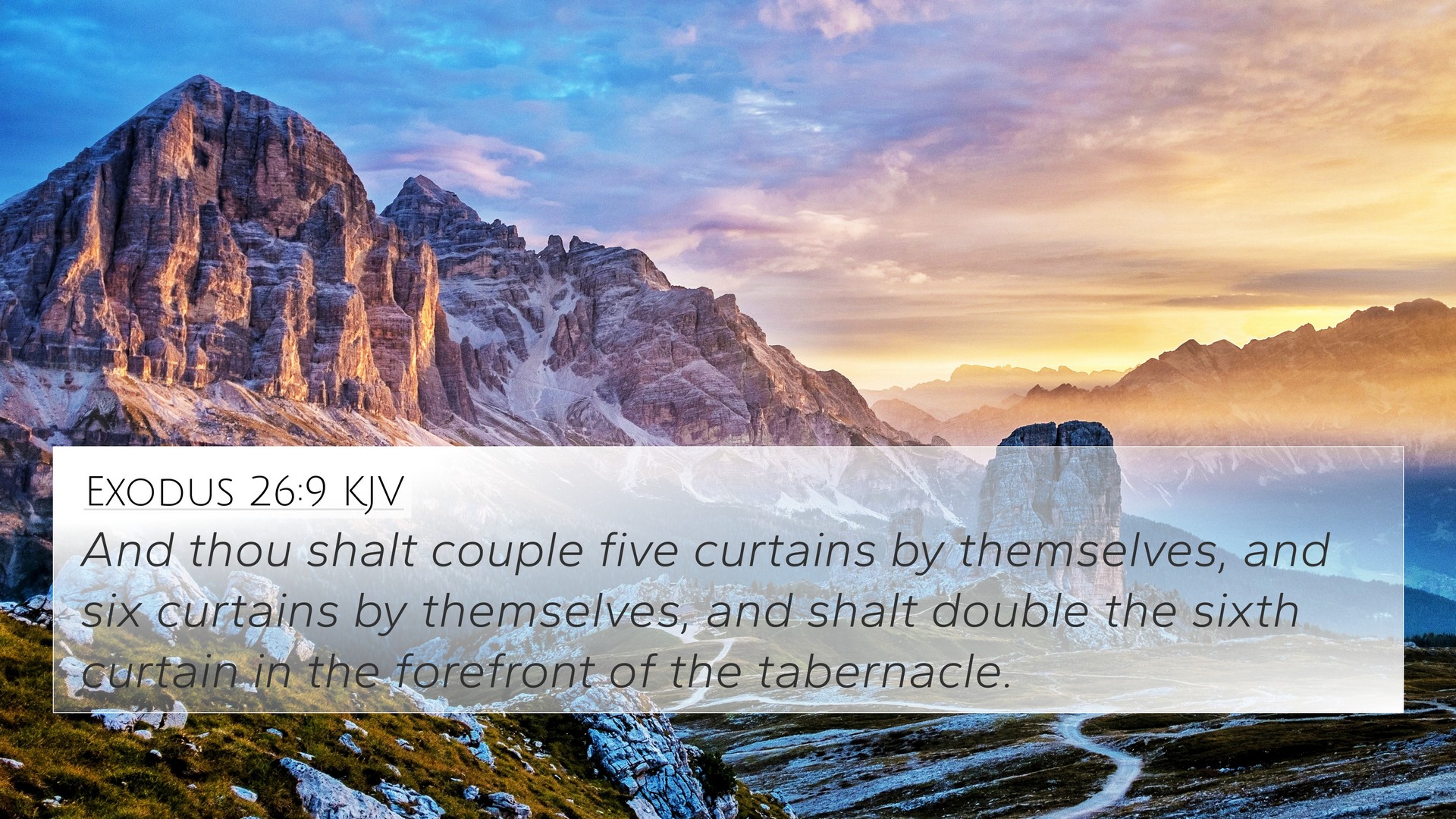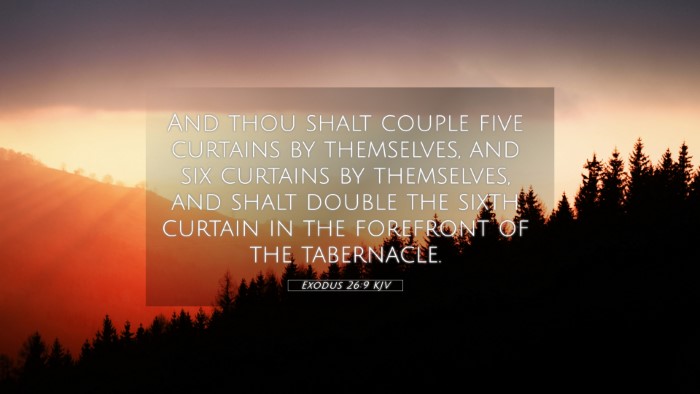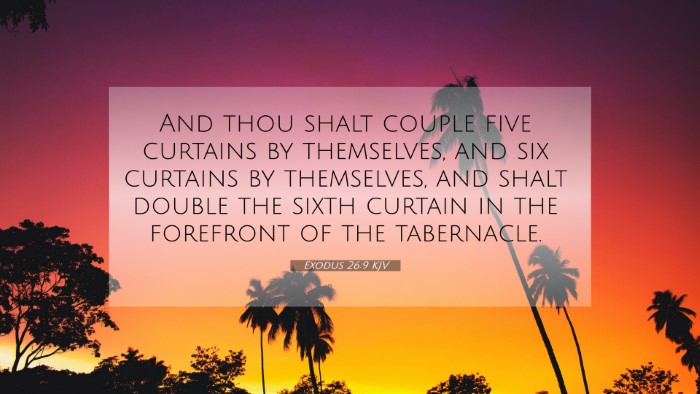Understanding Exodus 26:9
Verse: Exodus 26:9 - "And thou shalt couple five curtains by themselves, and six curtains by themselves, and shalt double the sixth curtain in the forefront of the tabernacle."
Contextual Overview
In the Book of Exodus, the Israelites are given detailed instructions for the construction of the Tabernacle, which served as a portable dwelling place for God among His people during their journey to the Promised Land. Exodus 26 provides specific directives regarding the curtains of the Tabernacle, emphasizing order, purpose, and divine design.
Summary of Insights from Public Domain Commentaries
Matthew Henry: Henry interprets this verse as highlighting God's meticulousness in His requirements for worship. The curtains symbolize the separation between the divine and the earthly and represent the need for a barrier that protects the sanctity of God’s presence. The act of coupling the curtains reflects the Church's unity in Christ, serving as a metaphor for believers coming together in the faith.
Albert Barnes: Barnes points out that the specific measurements and configurations are significant for understanding the heavenly order. The number of curtains is intentional, indicating a heavenly design where God’s presence dwells among His people. He argues that the various arrangements of the curtains also show the care that God takes in establishing a sacred space, which echoes in the New Testament where the church is referred to as the body of Christ, a new kind of Tabernacle.
Adam Clarke: Clarke elaborates on the symbolism of the curtains, indicating that they represent the distinction between the holy and the common. He notes that the instruction to double the sixth curtain indicates an emphasis on the entrance to the Holy Place, which foreshadows the role of Christ as the ultimate mediator between God and man. This entrance reflects the importance of access to God through layers of preparation, paralleling the access granted to believers through faith in Jesus.
Thematic Connections
Exodus 26:9 is rich in theological implications and can be cross-referenced with various scriptures that enhance the understanding of its themes:
- Hebrews 9:2-3: This New Testament passage discusses the structure of the Tabernacle and its significance in relation to the Old Covenant.
- Matthew 27:51: The tearing of the temple veil at Christ's crucifixion signifies access to God, reminiscent of the separation depicted in the Tabernacle's design.
- Revelation 21:3: The ultimate dwelling of God with humanity reflects the fulfilled promise that began with the Tabernacle's construction.
- John 1:14: The incarnation of Christ as God dwelling among us connects the earthly Tabernacle with His presence in the flesh.
- 1 Peter 2:9: Believers are called a royal priesthood, empowering them to live in the holiness once reserved for the Tabernacle.
- Exodus 40:30-34: The actual setup of the Tabernacle encapsulates God's presence with His people, paralleling the themes of Exodus 26.
- Galatians 3:24-25: Paul speaks of the Law, represented here by the Tabernacle, leading us to Christ, showing the covenantal progression from law to grace.
Inter-Biblical Dialogue
This verse serves as a crucial point in understanding the transition from the Old Covenant to the New Covenant, establishing a thematic dialogue across the Bible regarding God's desire to dwell among His people. The systematic layering of the curtains and their arrangement not only provided physical separations but also highlighted the metaphorical layers of access to God throughout biblical history. Thus, this verse connects to numerous scriptures, each adding depth and richness to the study of God’s relational dynamics with humanity.
Cross-Referencing Tools and Methods
When studying Bible verses such as Exodus 26:9, utilizing various cross-reference tools can provide deeper insights:
- Employ a Bible concordance to identify connections between similar themes.
- Use a Bible cross-reference guide for thematic analysis across both the Old and New Testaments.
- Engage in cross-reference Bible study methods to draw parallels between scriptures.
- A resourceful Bible chain reference technique can illustrate interconnected themes.
Conclusion
The detailed instructions in Exodus 26:9 reveal profound themes of God’s holiness and the importance of structure in worship. This verse, when examined alongside relevant cross-references, showcases the continuous narrative of God's desire for relationship with His people. The intertwining lessons from various commentaries highlight a deliberate design that ties the Old Testament Tabernacle to the New Covenant relationship established through Christ, encouraging believers to seek deeper understanding through scripture.


